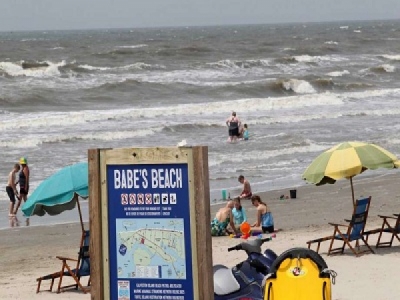
Posted on March 26, 2018
By Nick Powell, Chron
The Galveston City Council on Thursday approved the partial funding of a $25 million renourishment project for Babe’s Beach, two years after a previous dredging and beach restoration effort.
The Galveston Island Park board sought $1.5 million from the city to fortify Babe’s Beach — the 15-block stretch of coastline from 61st Street to 75th street along Seawall Boulevard. The project would take advantage of the Army Corps of Engineers’ regular dredging of the Houston-Galveston Ship Channel, with the dredged material used to fortify the beach with up to 1 million cubic feet of beach-quality sand.
“It’s all a matter of timing,” said Kelly de Schaun, executive director of the park board. “The Corps dredges the ship channel to maintain the depth for commerce activities, so they’re not gonna wait. We’re racing to line up the funding to make sure we can activate for the January 2019 dredge cycle.”
The park board is still paying off debt from the previous project, so de Schaun is actively soliciting funding from several different sources.
The beach renourishment project is a finalist for $4.5 million in funding from the RESTORE fund, established in the wake of the 2011 Deepwater Horizon spill in the Gulf of Mexico. The board is also seeking $3 million from the Texas General Land Office. The remaining funds would come from the Corps.
“We wanted to secure first our local funding alternatives, and once we have those in hand, that gives us leverage to go after the state,” de Schaun said.
The Galveston City Council will also establish a beach access and dune protection committee, which would appoint members from the community to review the city’s existing Beach Access and Dune Protection Plan and provide recommendations for amendments to the Planning Commission and City Council.
Any proposed amendments would then require approval from the Texas General Land Office, in accordance with the Texas Open Beaches Act.
Source: Chron





